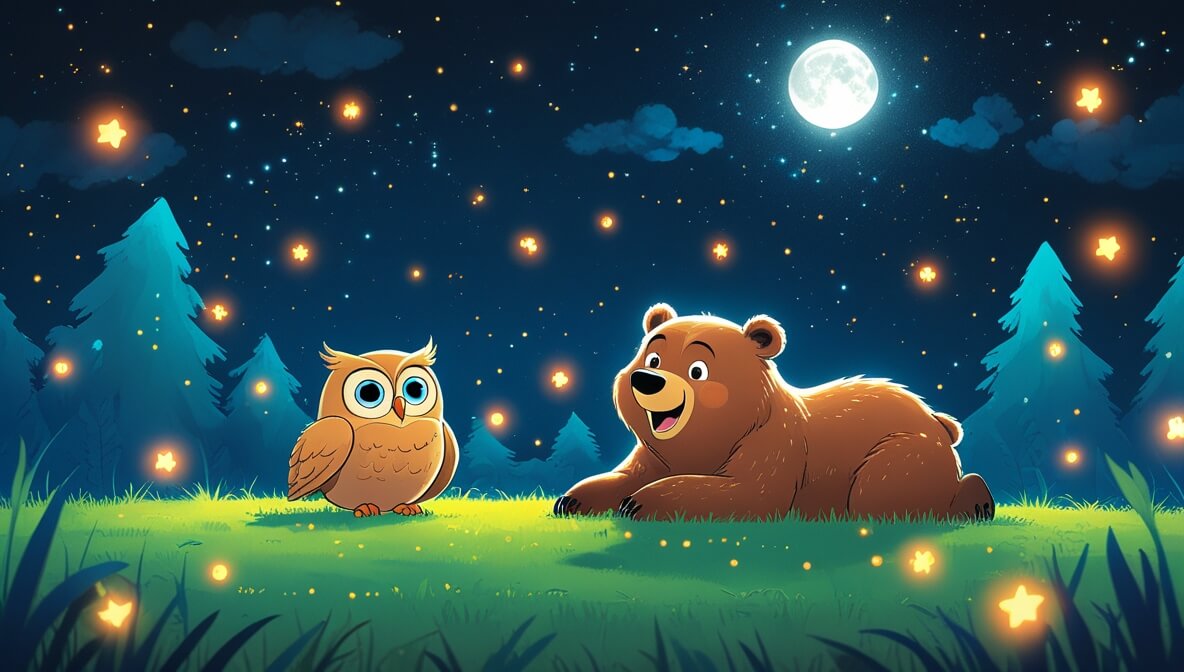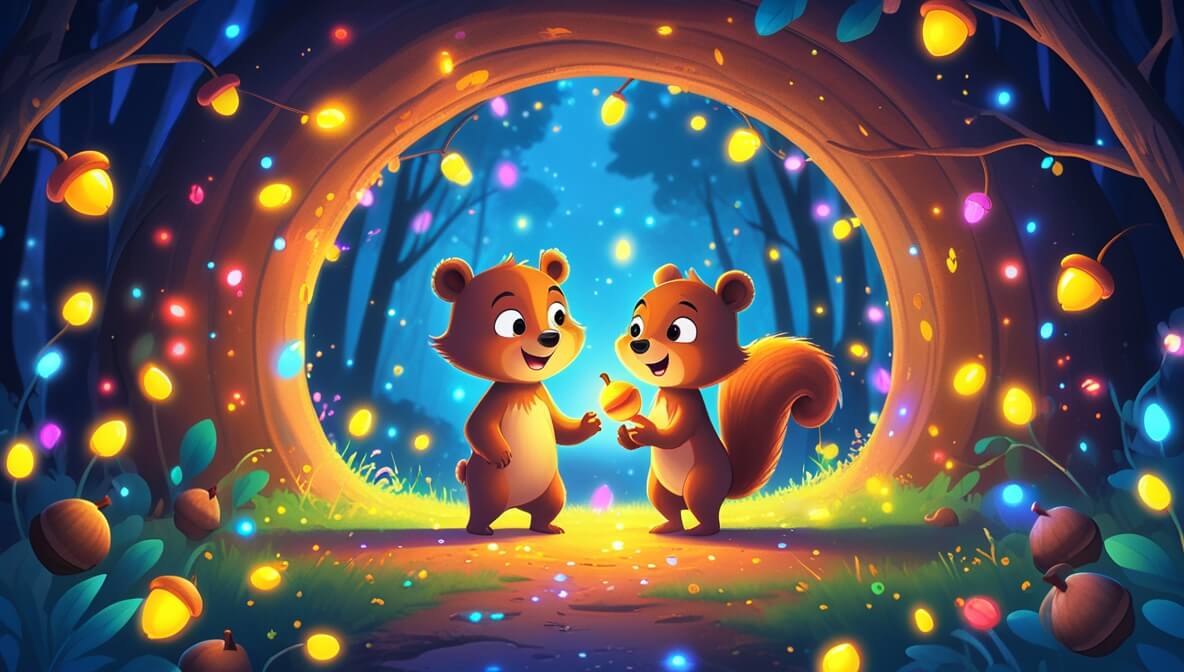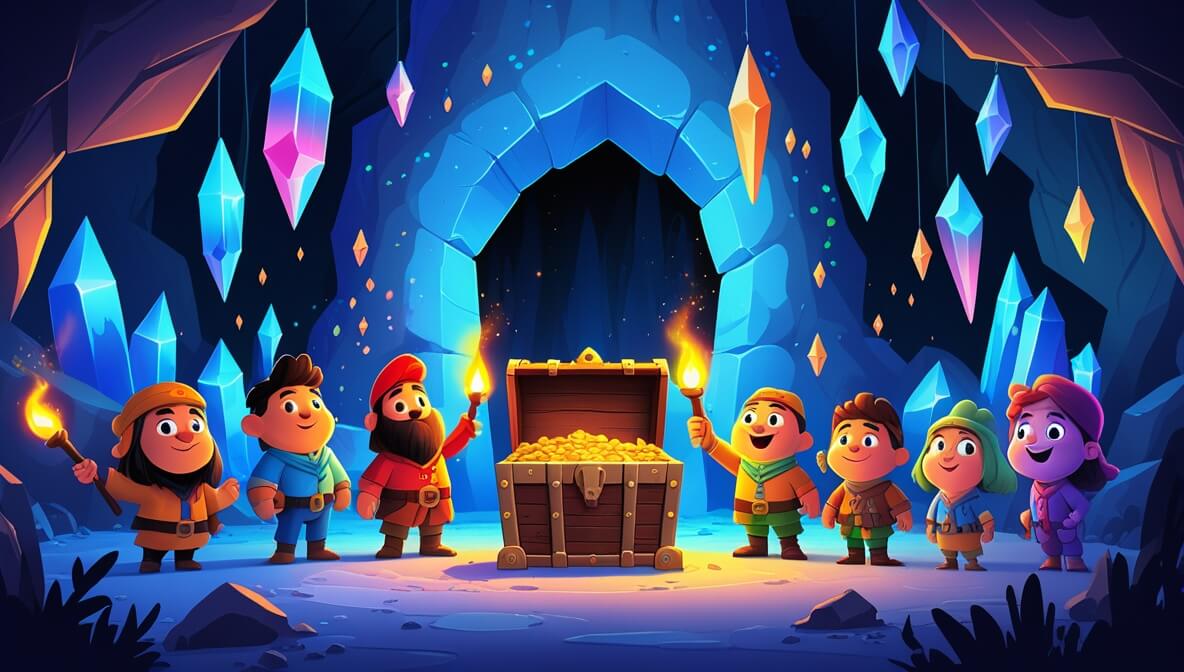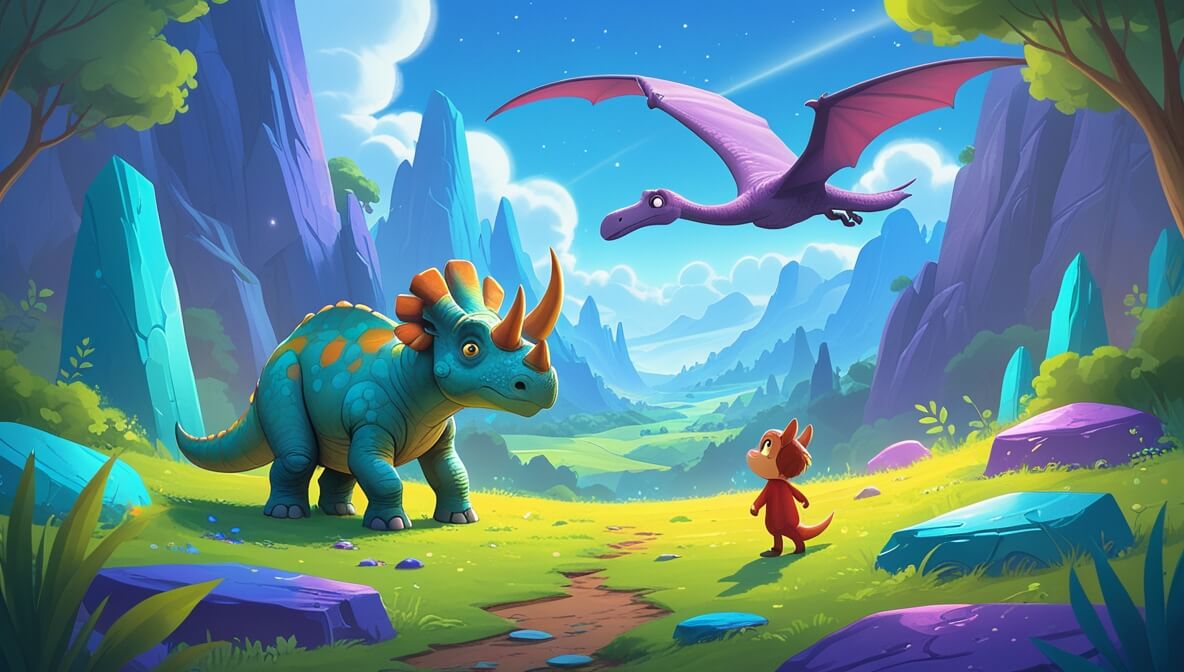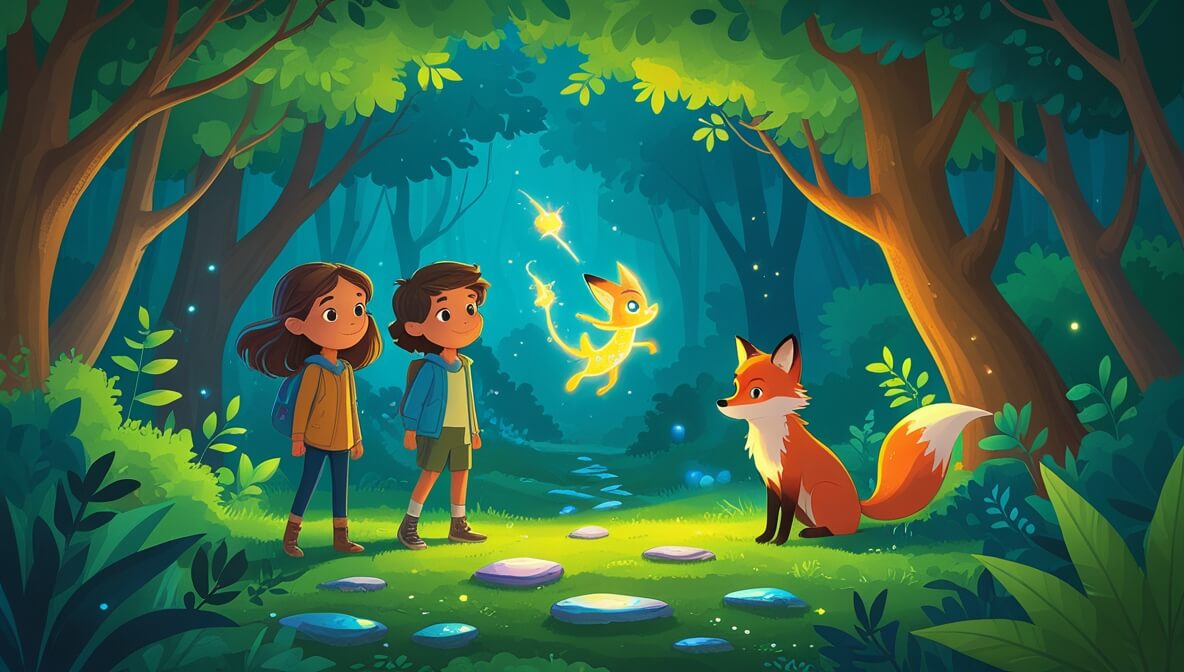A little bear named Snuggle and his friend, a wise owl named Hoot, embark on an adventure under the starry sky. They discover that their friendship is the brightest light of all.
Age Recommendation
0 – 4 years
Characters
Characters:
- Snuggle: A cuddly bear who loves adventures and exploring the night sky.
- Hoot: A wise owl who knows all about the stars and enjoys teaching Snuggle.
Story
Snuggle the bear was peeking out of his window, looking at the shiny stars. His friend, Hoot the owl, fluttered over and landed beside him. “Let’s go see the stars up close!” said Snuggle.
Under the Moonlit Sky
They walked through the forest, where the moonlight made everything glow. Hoot flapped his wings and said, “Follow me, Snuggle! I know the way!” Snuggle giggled and followed Hoot through the soft, cool night.
The Twinkling Field
They reached a field that sparkled with fireflies. “Look, Snuggle,” said Hoot, “the stars have come down to play!” Snuggle spun around, amazed by the twinkling lights. He felt warm inside, knowing he had such a great friend.
The Brightest Star
As they lay on the grass, Hoot pointed to a big, bright star. “That’s the North Star,” he explained. “It never moves and helps travelers find their way.” Snuggle felt happy and safe, thinking about how friends are like stars that light up the darkness.
The end.
Moral of the Story
Friendship is a guiding light that can make any adventure brighter. Just like stars guide travelers, good friends help us find our way.
Questions to Think About
- What do you think makes a good friend?
- Why is it fun to explore new things with friends?
- How did Snuggle feel when he saw the fireflies?
- What did Hoot teach Snuggle about the stars?
- Can you think of a time when you felt happy with a friend?
Do You Know
- Fireflies are insects that produce light in their bodies—a process called bioluminescence.
- The North Star is also known as Polaris and is located almost directly above the North Pole.
Word Explorer
- Twinkle: When something shines with a flickering light, like stars or fireflies.
- Adventure: A fun and exciting journey to explore new things.
- Wise: Being smart and understanding a lot about the world.
Emotions in the Story
- Excitement: Snuggle felt excited when planning to see the stars up close.
- Wonder: Snuggle was amazed by the fireflies in the twinkling field.
- Safety: Snuggle felt safe knowing that he had a friend like Hoot, just like the North Star.
Color Your Scene
Imagine the field where Snuggle and Hoot lie, surrounded by glowing fireflies. Draw them lying on the grass under a dark blue sky filled with stars. Use bright yellow for the fireflies and a soft silver for the moon.
Parents’ Corner
This story is a great way to talk to your child about:
Friendship: Discuss how Snuggle and Hoot enjoy their time together, highlighting the importance of having friends.
Exploration: Encourage your child to explore the world around them, just like Snuggle, and learn new things.
Curiosity: Talk about how asking questions and learning from others, like Snuggle did with Hoot, is a wonderful part of growing up.
Comfort in Darkness: Explain how friendships can be comforting, even when things seem dark or scary.

